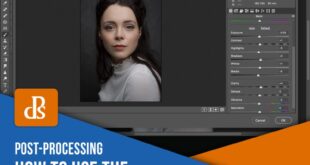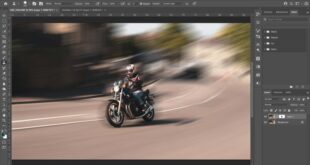Step By Step Guide To Developing Your Own Digital Painting Style In Photoshop – This is the third step and the main part of preparation for creating a digital painting from a photograph or Photoshopped image. A previous tutorial where I prepared a basic image can be found here In this section, I will explain how to scale up your original photo/artwork in 4 different ways to create a high-resolution digital painting.
If you want to duplicate the same image I used You can download the file here. Just extract and open the .JPG file in Photoshop (as a smart object if you wish). Feel free to post your results. But I would like you to give credit or link to this tutorial.
Step By Step Guide To Developing Your Own Digital Painting Style In Photoshop
The next section of the digital painting tutorial uses Studio 2 software from Topaz Labs to create basic working layers. But of course you can use other software. Actions plugins can achieve similar results.
Creating A Digital Painting In Photoshop; Create Working Layers The Easy Way
For this tutorial I’m assuming you have Adobe Photoshop installed (I use the Photographer subscription) and Topaz Studio 2. The older Topaz Impression and Abstraction plugins (alone or in combination with Topaz Studio 1) also work, but may be required. Similar results Other settings
The Impression filter/plugin has saved me a lot of time creating digital paintings. Because I used to paint these layers by hand. Now I can use this amazing plugin and focus on the main part of creating drawings. Of course, you might prefer a different technique for painting everything by hand. I’m just showing you how I created the work I posted.
We start with the original image and name this layer “Original” by double-clicking on the layer name and renaming it “Original” if it is a normal layer. For me, this is mostly a Smart Layer that I open in Lightroom (Edit in/Open as a Smart Object in Photoshop) or from another final Photoshop output.
I will not touch this “original” layer throughout the process. So it will act as a backup for comparison.
Photoshop Painting Effect: A Comprehensive Guide
If your original layer is a normal layer Duplicate the original layer twice and name the first copy “Main” and the second “Main Color”.
If your “original” layer is a Smart Object (as in my example), create a new layer above the original layer by clicking “Layer” in the Photoshop menu, selecting “New,” then “Layer” and naming this layer “Base.” – Now press SHIFT+CMD+OPTION+E on Mac or SHIFT+CTRL+ALT+E on PC simultaneously to make the stamp layer visible. Now duplicate the created base layer again by right-clicking on the base layer and selecting Duplicate. Rename the new layer to Base Color.
The Base Color layer will be the first layer we need to use Topaz Studio 2, so select it from the Filter menu in Photoshop. It will begin loading your image.
With a photo or image open in Topaz Studio 2, click the blue Add Filter button. Then a list of filters will appear. Find the Abstract filter in the Style section.
Create A Glow Effect In Photoshop
Turn the Scale Down slider until you’ve lost all the tiny details. I usually keep it between 30 and 60 depending on the type of image I’m working with.
When you are satisfied with the results You can apply the filter by clicking the “Accept” button in the top left corner of the home screen.
Next, duplicate the “Primary Color” layer and rename this copy to “Rough.” You can do this by selecting the “Primary Color” layer, then selecting “Layer” from the Photoshop menu, and clicking “Duplicate Layer…” Name the new layer. said “rough”
With the rough layer selected again To do so, select a filter from the menu and select the Topaz Studio 2 plugin again. You will be returned to the Studio 2 home screen. Click the blue Add Filter button again. And this time the display filter will be found in it. As for the “stylistic” part, now it’s all about the fun!
Simple Steps To Design Geometric Poster In Photoshop (part-2)
In this step, we need to create a rough drawing. Don’t forget to cover the surface. (Last option) But feel free to play around to get the best results that best suit your tastes.
As you can see I increased the opacity a bit more to make sure the brushstrokes were a little sharper or had more contrast. Lowering the slider will make the effect much smoother.
Increasing the color volume slider gives a richer, more structured image. which I really like But not at this stage of the drawing. We will add it later. By changing the stroke and rotation options. You can change the shape of the stroke. It’s also a great feeling later in this tutorial.
I added a few stroke color options to increase the contrast between the colors.
A Guide To Creating Digital Portraits
The stroke width and stroke length are kept at 0.00 but are different for all images. It depends on the type of image. For example, I would use a longer, wider brush for rough layers of portraiture.
The Leak slider also increases the contrast and texture of the lines. So I raised it a little bit. And the leak slider blurs the lines. I played with the contrast and line structure by adding bleeds and blotches. But usually the rough layers in my work have low contrast. Looks soft with a soft line structure.
For the “Color” and “Light” sections, I kept them as default. And for the “Texture” section I had to set the value to zero.
When you are finished and satisfied with the results. You can click “Accept” to save the effect on the Rough layer, but only if you plan to create digital paintings with this technique more often. You can save the look you just created. Before accepting the filter Just click the Save View button in the top right corner of the main window. And name the view something like Rough Paint. We’re finished with this layer.
Create A Welcoming Interior Using Line Art
Then select the “Base Layer” that contains your original photo/artwork and duplicate it. Name the duplicate layer “Medium” and duplicate it two more times and name these layers “High” and “High.” Turn off the visibility of the Fine and Ultra Fine layers for now.
Next, we will repeat the steps from the rough layer. But there are slightly different settings. Because now we use the base image as input in the footprint filter. So we have more details to work out.
Select the “Medium” layer and from the Photoshop menu select “Filter” and “Topaz Studio 2.” Click the blue Add Filter button again and select Show Filter.
This time, I chose the first brush stroke. (Default) Select a medium number of strokes with a slightly larger brush size and paint volume. and increase the opacity of the color
How To Make Digital Art: Techniques, Tools, And Tips
I leave the other settings All are default. But I encourage you to play around here to customize this layer however you want. The main thing is that it is a layer with average details and colors.
When you’re ready Don’t forget to save your view for later. and click the accept button to save the result to the media layer.
Then add a full black mask to the “Medium” layer to make this layer invisible. The shortcut for this is to hold down option/at while clicking the mask icon under the Layers panel.
If everything goes well You will see the contents of the “rough” layer on the screen.
Color Correction Photoshop: A Step-by-step Guide
Next, select the “Fine” layer and make it visible again by clicking on the little eye symbol. to the left of the layer icon And repeat the “Middle” layer steps above using these settings in the screenshot. But please try it out for yourself.
Since I am a big fan of the default brushes. So I used this brush again for the Toke layer.
Again, play with the contrast and texture of this layer by adjusting the Bleed and Smudge sliders. The purpose of the thin layer is: is to show the finer details
Again, don’t forget to save your view when you’re done. This is so that you can perform this step faster the next time you want to take on a similar project. Additionally, if you or your computer encounters an error, You can easily start over and choose from already created images without wasting any more valuable time.
3 Ways To Learn Digital Art
When it comes to computers being hacked It might be time to save your document. If you haven’t saved yet
When you’re back in Photoshop with the Fine layer ready, active, and visible. You can put the black mask back on the layer by Option/Alt clicking the little mask icon. Under the Layers panel Of course you can add a black mask and fill it with black if you want.
Now we
 Alveo Creative Blog Guiding users through techniques for enhancing images, retouching portraits, and mastering popular editing software
Alveo Creative Blog Guiding users through techniques for enhancing images, retouching portraits, and mastering popular editing software




